(This list is sorted in a way I like it. Its not quite exhaustive and probably not up-to-date.
See Google Scholar for a non-curated list with citation counts.
I’ll be updating this with correct links as time allows)
Peer Reviewed Papers
2018
From Pulse Trains to “Coloring with Vibrations”: Motion Mappings for Mid-Air Haptic Textures 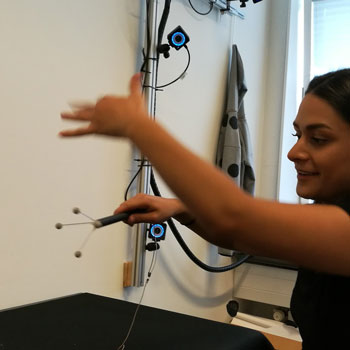
Paul Strohmeier , Sebastian Boring and Kasper Hornbæk
Human Factors in Computing Systems (CHI)
In this paper we explore rendering textures in 3D space. As our feedback system does not provide the counter-force one experiences when interacting with a surface texture, it is not clear how such mid-air textures might be perceived. We present a qualitative analysis of the experience of interacting with mid-air textures, and how input parameters influence this experience.
zPatch: Hybrid Resistive/Capacitive eTextile Input 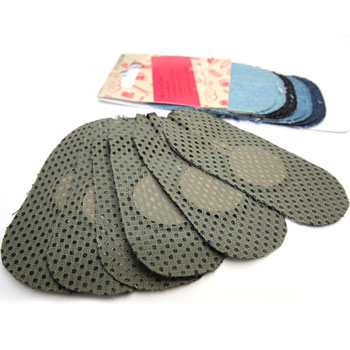
Paul Strohmeier, Jarrod Knibbe, Sebastian Boring and Kasper Hornbæk
Tangible, Embedded, and Embodied Interaction (TEI)
Touch input on clothing is difficult as there are ample opportunities for unintentional activation. In this paper we present a simple fabric design that acts as both a resistive and a capacitive sensor. We present instructions on how to build it and we demonstrate that the resulting hybrid sensor is more robust than either resistive- or capacitive-only equivalents and that the additional information improves the detection of custom gestures.
[ pdf ] [ video ] [ video: raw data ] [ github ] [ evaluation data ] [ instructables ]
2017
Automatic Calibration of High Density Electric Muscle Stimulation 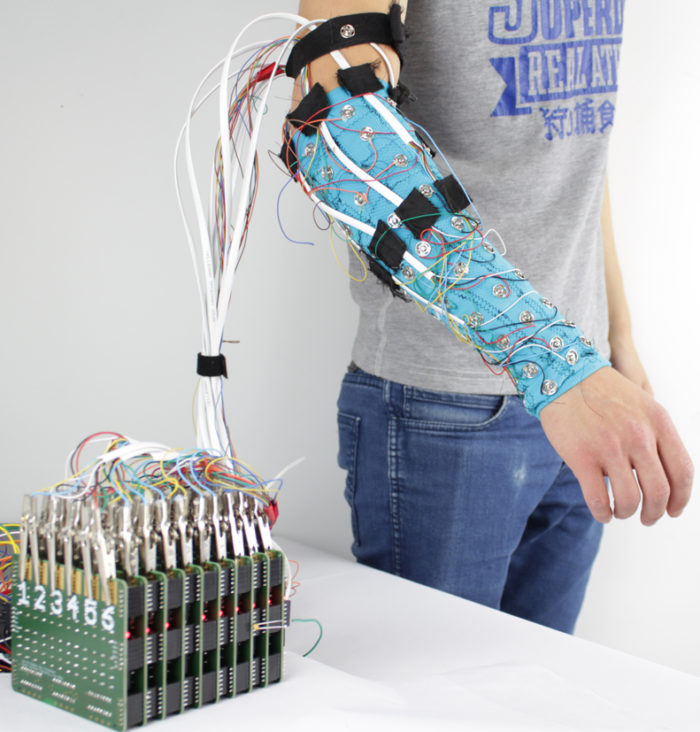
Jarrod Knibbe, Paul Strohmeier, Sebastian Boring and Kasper Hornbæk
Interactive, Mobile, Wearable and Ubiquitous Technologies (IMWUT)
Using methods presented in this paper we could in the future record the skilled movement of an expert musician and play them back using the hands and fingers of a novice. I assisted in designing the electronics and implemented the circuitry.
[ pdf ]
Designing a Multi-Touch eTextile for Music Performances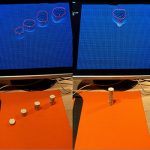
Maurin Donneaud, Cedric Honnet Paul Strohmeier
New Instruments for Musical Expression (NIME) 2017
This paper presents a fabric multi-touch sensor that is used as an audio-controller. The sensor was designed by Maurin Donneaud with assistance by Cedric Honnet on the embedded software development. I conducted the evaluation with Cedric and did the analysis as well as the paper write-up.
Generating Haptic Textures with a Vibrotactile Actuator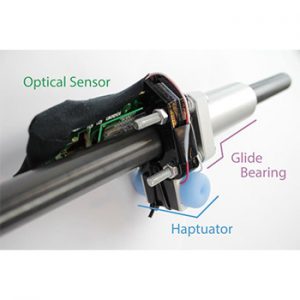
Paul Strohmeier, Kasper Hornbæk
Human Factors in Computing Systems (CHI) 2017
When we move our finger over a material, the structure of the fingertip and the structure of the material interact – they generate vibration. These vibrations are experienced as textures. In this paper we explore how properties of such vibrations map to experiences of texture.
[ pdf ] [ video ] [ raw data ] [ Best Paper – Honourable Mention ]
2016
ReFlex: A Flexible Smartphone with Active Haptic Feedback for Bend Input 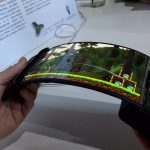
Paul Strohmeier, Jesse Burstyn, JP Carrascal, Vincent Levesque Roel Vertegaal
International Conference on Tangible, Embedded, and Embodied Interaction (TEI) 2016
We presented the first fully functional, wireless flexible phone. In cooperation with Immersion we augmented the phone with a haptic actuator. This allows us to change how the material properties of the phone are experienced. We conducted studies investigating bend-input mappings to haptic feedback styles.
[ pdf ] [ video ] [ video – live demo ]
An Evaluation of Shape Changes for Conveying Emotions 
Paul Strohmeier, Juan Pablo Carrascal, Bernard Cheng, Margaret Meban, Roel Vertegaal
Human Factors in Computing Systems (CHI)
In a world in which we use shape changing and malleable interfaces, can we use these to subtly express and transmit emotions using shape and shape transitions?
2015
Printput: Resistive and capacitive input widgets for interactive 3D prints 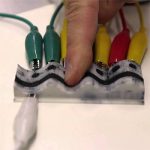
Jesse Burstyn, Nicholas Fellion, Paul Strohmeier, Roel Vertegaal
IFIP TC.13 Conference on Human-Computer Interaction (INTERACT)
3d printing is becoming increasingly more useful as a prototyping method. The methods in this paper provide a way to add sensors directly to a 3d print. I contributed sensor designs.
[ pdf ] [ video ] [ video: talk + live demo ]
DisplaySkin: Exploring pose-aware displays on a flexible electrophoretic wristband 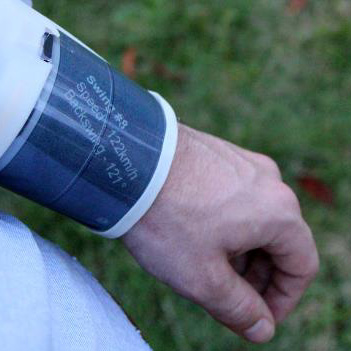
Jesse Burstyn, Paul Strohmeier, Roel Vertegaal
Tangible, Embedded, and Embodied Interaction (TEI)
Watches became popular because of the fast and intuitive way in which they can be used. Smartwatches typically are more complex, requiring menu navigation or activation gestures. This paper explores a method of adapting a watch face to the users body pose to make interactions with a smartwatch easier.
DisplayPointers: Seamless Cross-Device Interactions 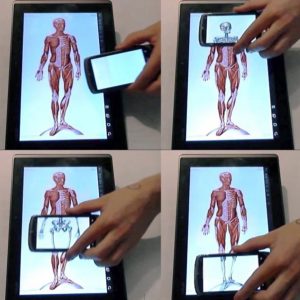
Paul Strohmeier
Advances in Computer Entertainment Technology (ACE)
I demonstrate a simple method of creating multi-device interactions using the already existing capacitive touch-sensors of mobile devices.
2014
Mediated Touch: Exploring embodied design for remote presence 
Paul Strohmeier, Ike Kamphof
International Society for Presence Research (ISPR)
We present an exploration of how people experience communication through a humanoid telerobot
Please see the related TEI publication [ pdf ]
[ video ] [ Top Presentation Award ]
2012
With a flick of the wrist: stretch sensors as lightweight input for mobile devices 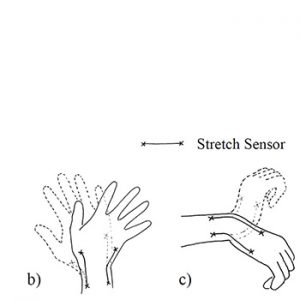
Paul Strohmeier, Jesse Burstyn, JP Carrascal, Vincent Levesque Roel Vertegaal
International Conference on Tangible, Embedded, and Embodied Interaction (TEI) 2016
I designed a basic motion-capture method that can be embedded into clothing using stretch sensors.
[ pdf ] [ video ]
2011
Irrigating Kagan’s Desert 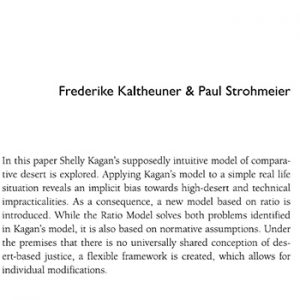
Frederike Kaltheuner, Paul Strohmeier
Maastricht Journal of Liberal Arts
Frederike and I wrote this essay to point out that the model of distributive justice used by Shelley Kagan is based on a set of normative assumptions. It is therefore only ‘intuitive’ to people who share his assumptions. We demonstrate how his model would change if the initial assumptions change.
[ pdf ]
Posters & Demos
(Peer Reviewed or Jouried)
2016
What can Doodles on the Arm teach us about On-Body Interaction? 
Paul Strohmeier, Juan Pablo Carrascal, Kasper Hornbæk
Extended Abstracts on Human Factors in Computing Systems (CHI EA)
While on-body interaction is treated as a novel concept in HCI, we point out that it is not necessarily the case. One way in which on-body interaction is quite common is the habit of doodling or writing notes on one’s arm. We presented a survey that explores this practice, in hope that it may serve as inspiration for future HCI explorations.
Developing an Ecosystem for Interactive Electronic Implants 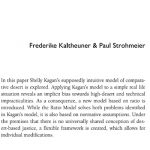
Paul Strohmeier, Cedric Honnet, Samppa Von Cyborg
Living Machines – Biomimetic and Biohybrid systems – Springer LNAI Series (LM)
This is a write-up of a little hackathon of Cedric Honnet and myself. We designed and implemented the implant presented in this paper from scratch within 7 days. Samppa von Cyborg supported with process by helping us understand the physical constraints presented by current body-mod methods
2015
DIY IR sensors for augmenting objects and human skin 
Paul Strohmeier
Augmented Human (AH)
I presented various IR based sensors that I had designed over the previous years.
[ pdf ] [ poster ] [ Best Poster Award ]
Effects of display sizes on a scrolling task using a cylindrical smartwatch 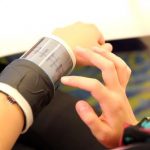
Paul Strohmeier, Jesse Burstyn, Roel Vertegaal
Human-Computer Interaction with Mobile Devices and Services (MobileHCI)
Using the prototype I built for my master’s thesis, we investigated how different display sizes effected interactions, while keeping the input surface constant.
[ pdf ]
2013
PaperTab: an electronic paper computer with multiple large flexible electrophoretic displays 
Aneesh Tarun, Peng Wang, Audrey Girouard, Paul Strohmeier, Derek Reilly, Roel Vertegaal
Extended Abstracts on Human Factors in Computing Systems (CHI EA)
PaperTab is a multi-device ecology that harnesses strengths of pen-and paper interaction as well as digital systems. I contributed interaction concepts as well as initial sensor designs.
[ video ]
Interactive Art
Rachel Freire, Cedric Honnet, Paul Strohmeier (2017)
Second Skin: An Exploration of eTextile Stretch Circuits on the Body
Tangible, Embedded and Embodied Interaction (TEI)
[ pdf ] [web]
Paul Strohmeier (2016)
Exploring Bodies, Mediation and Points of View using a Robotic Avatar
Tangible, Embedded and Embodied Interaction (TEI)
[ pdf ]
Bernard Cheng, Antonio Gomes, Paul Strohmeier, Roel Vertegaal (2014)
Mood fern: exploring shape transformations in reactive environments
Advances in Computer Entertainment Technology (ACE)
[ pdf ]
Paul Strohmeier, Kaja Vembe Swensen, Cameron Lapp, Audrey Girouard, Roel Vertegaal (2012)
A Flock of Birds: bringing paper to life
Tangible, Embedded and Embodied Interaction (TEI)
[ pdf ]
Commentary
Ann Light, Chris Frauenberger, Jennifer Preece, Paul Strohmeier, and Maria Angela Ferrario (2017)
Special Topic: Taking Action in a Changing World.
ACM Interactions Magazine
[ pdf ]
Casey Fiesler, Lisa Anthony, Paul Strohmeier, Susan Fussell, Gloria Mark
Taking Action in a Changing World: Research and Community
Extended Abstracts on Human Factors in Computing Systems (CHI EA)
[ pdf ]
Showcases
Jinsil Hwaryoung Seo, Annie Sungkajun, Meghan Cook, Young Suk Lee, Susanna Hertrich, Akitoshi Honda, Rachel Freire, Paul Strohmeier, Cedric Honnet (2017)
Demo Hour
ACM Interactions Magazine
[ pdf ]
Aneesh Tarun, Peng Wang, Paul Strohmeier, Audrey Girouard, Derek Reilly, Roel Vertegaal
PaperTab: tablets as thin and flexible as paper
Extended Abstracts on Human Factors in Computing Systems (CHI EA)